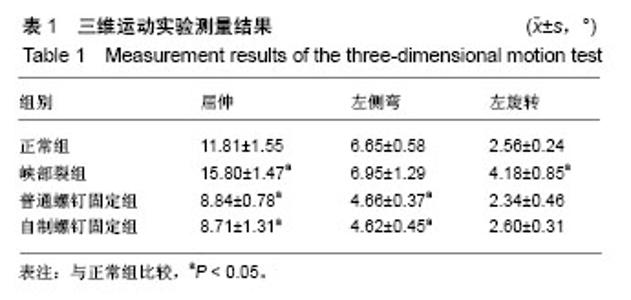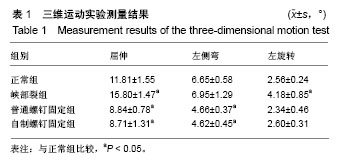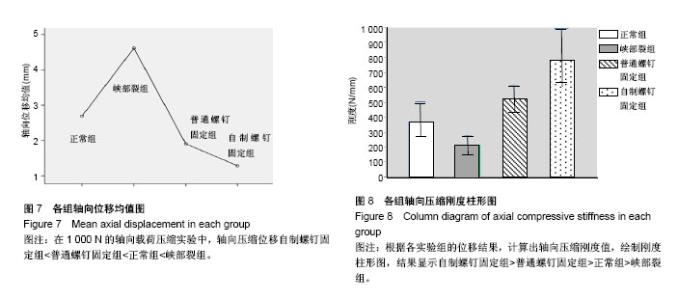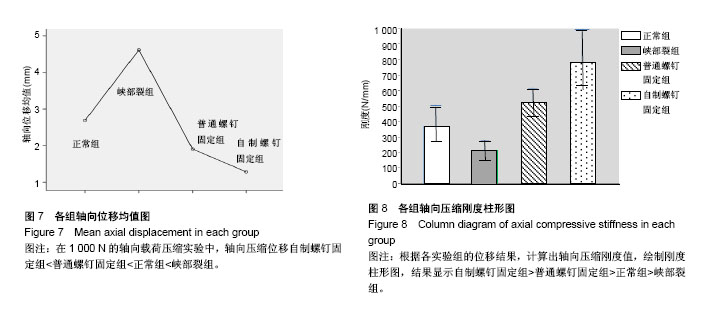| [1] Cragg A,Carl A,Casteneda F,et al.New percutaneous access method for minimally invasive anterior lumbosacral surgery. J Spinal Disord Tech. 2004;17(1):21-28.[2] Ledet EH, Carl AL, Cragg A. Novel lumbosacral axial fixation techniques. Expert Rev Med Devices. 2006;3(3):327-334.[3] Marotta N, Cosar M, Pimenta L, et al. A novel minimally invasive presacral approach and instrumentation technique for anterior L5-S1 intervertebral discectomy and fusion: technical description and case presentations. Neurosurg Focus. 2006;20(1):E9.[4] 王善坤,宋西正.经骶前间隙入路轴向腰椎间融合术的研究进展[J].中国矫形外科杂志,2014,22(7):625-628.[5] 颜琳力,宋西正.腰骶轴向融合与尾骨周围解剖研究进展[J].中南医学科学杂志,2016,44(4):364-367.[6] 宋西正,王文军,易明,等.L5/S1轴向固定经皮椎弓根单向锁定研究[J].中华实验外科杂志,2016,33(4):1063-1066.[7] 陈海丹,符策岗,曾艳,等.腰椎椎间融合各术式之间的比较[J].中国老年学杂志,2016,36(16):4097-4100.[8] 宋西正,王文军,易明,等.L5S1椎体结构的CT测量及经皮椎弓根单向锁定的可行性研究[J].中华骨科杂志, 2015,35(10):1068-1074.[9] 李阳.L5--S1轴向融合术(AxiaLIF)的相关解剖学测量及有限元分析[D].南方医科大学,2014.[10] Ledet EH, Tymeson MP, Salerno S, et al. Biomechanical evaluation of a novel lumbosacral axial fixation device. J Biomech Eng. 2005;127(6): 929-933.[11] Akesen B, Wu C, Mehbod AA, et al. Biomechanical evaluation of paracoccygeal transsacral fixation. J Spinal Disord Tech. 2008; 21(1): 39-44.[12] 刘继成,王文军. 组合微创技术在腰椎疾病中的应用[J].骨科, 2013, 4(3):165-168.[13] 邓旭东.微创椎弓根螺钉内固定联合骶前间隙轴向融合治疗 L5椎体滑脱症的临床观察[J].创伤外科杂志,2016,18(8):461-465.[14] 欧阳智华,阙伊辰,宋西正,等.轴向融合联合经皮螺钉治疗轻中度腰5椎体滑脱症的临床观察[J].中南医学科学杂志, 2017,45(3): 226-229,233.[15] 易红蕾,夏虹,韦葛堇,等.经皮骶前轴向腰骶椎间融合术(AxiaLIF)在成人脊柱侧凸长节段脊柱融合术中的应用研究进展[J].颈腰痛杂志, 2015,36(6):502-504.[16] 李庆龙,倪文飞,吴爱悯,等. L_5/S_1轴向联合斜向螺钉内固定术的生物力学研究[J]. 脊柱外科杂志,2015,13(6):377-381.[17] 李庆龙.L5/S1轴向联合斜向螺钉内固定行椎间融合的生物力学研究[D].温州医科大学,2015.[18] 易新. 腰骶椎带锁轴向融合固定器有限元分析[D].南华大学,2014.[19] 易明. L4-S1轴向固定单向锁定影像学研究[D].南华大学,2015.[20] Hofstetter CP,Shin B,Tsiouris AJ,et al.Radiographic and clinical outcome after 1- and 2-level transsacral axial interbody fusion.J Neurosurg Spine. 2013;19(4):454-463. [21] 曾德辉,王文军,张卫,等.国人直肠后间隙入路轴向行腰骶椎融合的影像学与解剖学测量[J].中国脊柱脊髓杂志, 2011,21(5): 390-394.[22] 马向阳.腰骶椎带锁轴向融合固定的影像学研究[D].南华大学, 2013.[23] 王善坤. 腰骶椎带锁轴向融合内固定的生物力学测试[D].南华大学, 2014.[24] 刘发平.腰5骶1前路内固定系统的研制[D].第三军医大学,2008.[25] 朱如森,冯世庆,刘岩.脊柱内固定椎弓根螺钉置入后生物力学的稳定性[J].中国组织工程研究,2013,17(17):3156-3163.[26] 潘鹤海,王丽冰,于滨生,等.L5/S1和骶髂关节对腰-髂固定稳定性影响的生物力学分析[J].中国脊柱脊髓杂志,2013,23(9): 837-841.[27] 刘上楼,徐军,倪卓民,等.经胸腰段伤椎单节段椎弓根螺钉固定后的生物力学特性[J].中国组织工程研究,2013,17(39):6908-6913.[28] 闫石,苏峰,张志敏,等.经伤椎置钉对椎弓根皮质劈裂合并椎体骨折的生物力学稳定性的影响[J].中国医学科学院学报, 2014, 36(4):415-419.[29] 车武,姜允琦,马易群,等.单节段椎弓根螺钉固定联合上方棘突间Coflex置入的生物力学评价[J].中国脊柱脊髓杂志, 2015,25(1): 62-66.[30] Yuan Q,Han X,Han X,et al.Krag versus Caudad trajectory technique for pedicle screw insertion in osteoporotic vertebrae: biomechanical comparison and analysis.Spine. 2014;15;39:B27-35. [31] Wadhwa RK,Thakur JD,Khan IS,et al.Adjustment of suboptimally placed lumbar pedicle screws decreases pullout strength and alters biomechanics of the construct:A pilot cadaveric study. World Neurosurg.2014;2(14).1878-1880.[32] Law M,Tencer AF,Anderson PA.Caudo-epbalad loading of pedicle screws:mechanisms of losing and methods of augmentation. Spine.1993;17(18):2438-2443. [33] Gaines RW Jr.The use of pediele-screw internal fixation for the operative treatment of spinal disorders. Bone Joint Surg Am 2000; 82-A(10):1458-1476.[34] 臧法智,陈华江,王建喜,等.钽涂层椎弓根螺钉的研制与初步动物实验研究[J].颈腰痛杂志,2016,37(2):85-88.[35] 路荣建,刘洪臣.多孔钽作为骨植入材料的研究进展[J].中华老年口腔医学杂志,2013,11(3):173-176.[36] 李斌,华永新,杨光,等.多孔钽金属的生物学特性:近期临床应用安全但远期反应待证实[J].中国组织工程研究, 2014,18(43): 7028-7032.[37] 张宇,张永兴,赵庆华,等.多孔钽金属在临床骨关节修复中的应用[J].国际骨科学杂志,2015,36(1):36-39.[38] 蔡洪桢,贺慧霞.钽金属在临床应用中的研究进展[J].口腔颌面修复学杂志,2017,18(1):46-50. |



